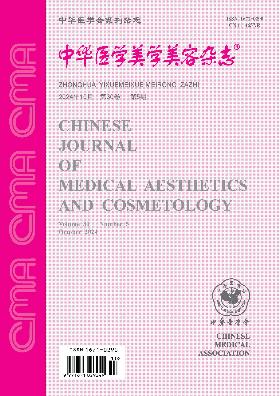自体肋软骨用于鼻尖手术86例报告
引用次数: 0
摘要
目的介绍自体肋软骨移植在亚洲隆鼻术中的应用经验和技术,并报告86例连续隆鼻病例的手术结果和并发症。方法所有手术均由第一作者(刘AT)采用开放式入路,在去除鼻尖原有的注射材料、L形植入物或增生性瘢痕组织后,根据三脚架理论,利用肋软骨和软骨膜重建鼻尖突起。回顾性分析病历和手术记录,总结并发症。鼻背增大术采用肋软骨或I型异体骨,有时采用腹直肌前鞘。患者对术后鼻腔外观的主观满意度进行自我评分(1分恶化,2分无变化,3分改善,4分显著改善)。结果2015年9月至2017年3月,86例患者在我院接受了隆鼻手术。术后随访6~20个月。总体而言,大多数患者的功能和美学结果令人满意,患者自我评价的平均得分为3.3±0.6。未观察到移植物暴露、活动性或显著吸收、肺气肿或显著供区疼痛。结论亚洲鼻整形术中的自体肋软骨移植物即使并发症和发病率很低,也是一种多功能、可靠的移植物材料,适用于严重的短鼻或鞍鼻、因以前的L形隆鼻而收缩的鼻以及已经收获间隔软骨的鼻整形术。关键词:自体肋软骨;鼻尖整形术;鼻背增大术;翻修鼻整形术;鞍鼻本文章由计算机程序翻译,如有差异,请以英文原文为准。
Autologous costal cartilage for nasal tip surgery: report of 86 cases
Objective
To present our experience and techniques with the use of autologous costal cartilage grafts in Asian rhinoplasty, and to report the surgical results and complications in 86 consecutive rhinoplasty cases.
Methods
All operations were performed by the first author (Liu AT) with open approach, costal cartilages and perichondrium were used to reconstruct the nasal tip projection according to the tripod theory in rhinoplasty, after removing the previous injection material, L-shaped implant or hypertrophic scar tissue in the tip. Medical charts and operative records were reviewed retrospectively to summary the complications. Nasal dorsum augmentation was done by costal cartilage or I-shaped allograft, sometimes with anterior sheath of rectus abdominis. Patients' subjective satisfaction of the postoperative nasal appearance was self-evaluated with grading (1 worse, 2 no change, 3 improved, and 4 much improved).
Results
From September 2015 to March 2017, 86 patients underwent rhinoplasty at our hospital. The postoperative follow-up duration was 6 to 20 months. Overall, functional and aesthetic outcome was satisfactory in most patients, and the mean score by the patients' self-evaluation was 3.3±0.6. Graft exposure, mobility, or significant resorption, pneumothorax or significant donor-site pain were not observed.
Conclusions
Even with minimal complications and morbidities, autologous costal cartilage grafts in Asian rhinoplasty is a versatile and reliable graft material for nasal tip surgery in severe short or saddle nose, contracted nose due to previous L-shaped augmentation and revision rhinoplasty in which the septal cartilage has already been harvested.
Key words:
Autologous costal cartilage; Nasal tip plasty; Nasal dorsum augmentation; Revision rhinoplasty; Saddle nose
求助全文
通过发布文献求助,成功后即可免费获取论文全文。
去求助
来源期刊
自引率
0.00%
发文量
4641
期刊介绍:
"Chinese Journal of Medical Aesthetics and Cosmetology" is a high-end academic journal focusing on the basic theoretical research and clinical application of medical aesthetics and cosmetology. In March 2002, it was included in the statistical source journals of Chinese scientific and technological papers of the Ministry of Science and Technology, and has been included in the full-text retrieval system of "China Journal Network", "Chinese Academic Journals (CD-ROM Edition)" and "China Academic Journals Comprehensive Evaluation Database". Publishes research and applications in cosmetic surgery, cosmetic dermatology, cosmetic dentistry, cosmetic internal medicine, physical cosmetology, drug cosmetology, traditional Chinese medicine cosmetology and beauty care. Columns include: clinical treatises, experimental research, medical aesthetics, experience summaries, case reports, technological innovations, reviews, lectures, etc.

 求助内容:
求助内容: 应助结果提醒方式:
应助结果提醒方式:


